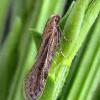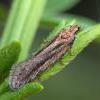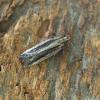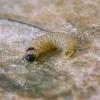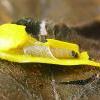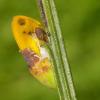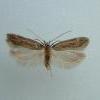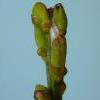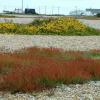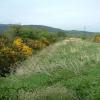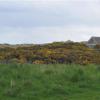35.093 Mirificarma mulinella (Zeller, 1839)
Status and Distribution
Widespread and locally common over much of the British Isles but apparently uncommon or possibly even absent from some areas where only gorse occurs. Not recorded from the Outer Hebrides or Shetland.
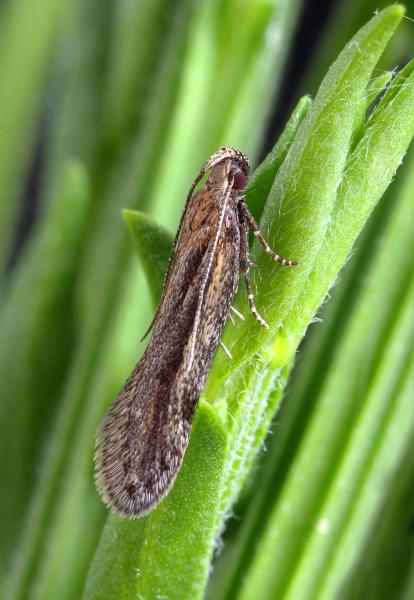
Provisional map
Foodplant and Larval Feeding Signs
Ulex europaeus (gorse), see distribution map, Cytisus scoparius (broom) and occasionally on Lupinus arboreus (tree lupin) and a cultivar of Genista tinctoria (dyer's greenweed).
In Europe, has also been recorded on Cytisus grandiflorus (wooly-podded broom), Lembotropis nigricans, Genista germanica and Calicotome spinosa.
Small holes in an unopened flower bud or light spinning around the top of a shoot indicate the possible presence of a larva.
Habitat
Finding the Moth
Larva: the small entrance hole on an unopened or partially opened flower may indicate the presence of a larva feeding inside. Other insects also make such holes and Agonopterix nervosa has been bred from flowerheads of broom where the holes were observed. In tree lupin, the larva is found on the leaves, spinning a leaflet into a pod. In Anglesey, North Wales, the moth was bred from a larva feeding in spun broom shoots and such feeding has since been located in Lancashire. A photograph of this feeding method (from Sale Water Park) can be seen in the Feeding section.
Adult: can be disturbed from, smoked out of, or netted flying close to the foodplant. It has also been attracted to sugar (Hertfordshire 1969), found nectaring on ragwort and is strongly attracted to light.
Similar Species
A variable species, often showing a dark brown streak on the forewing from about one third to the apex. A second, occasionally merging, streak may also be present starting from near the base to about one half. When worn or lacking these obvious streaks dissection may be necessary.
In Europe, and discovered for the first time in Denmark in 2014, Mirificarma interrupta can appear quite similar to the pale-winged, dark,narrow-streaked form of M. mulinella. The former species is shorter-winged, has cream forewings with a prominent black streak and flies, generally, earlier in the year, between March and August, possibly in two broods. The larva of M. interrupta feeds on Cytisus scoparius (broom) and various Genista species including G. tinctoria (dyer's greenweed).
In Europe it has been noted that the moth is often recognised by the presence of many orange scales which may form slender stripes on the forewing. Comments on the usefulness of this identification feature in British specimens would be appreciated from those encountering this moth regularly.
Single brooded from early July to early September; rarely occuring from mid-June and to late October. A late April adult was reported from Cornwall in 2008 and twice in late May 2009.
For any pale, obviously black streaked forms found early in the season, particularly March to June, Mirificarma interrupta may need to be considered - see 'Finding'.

